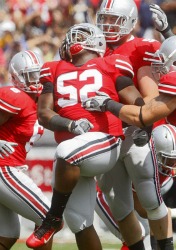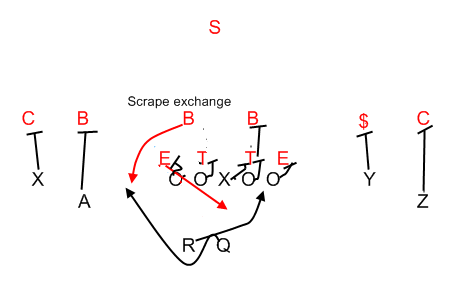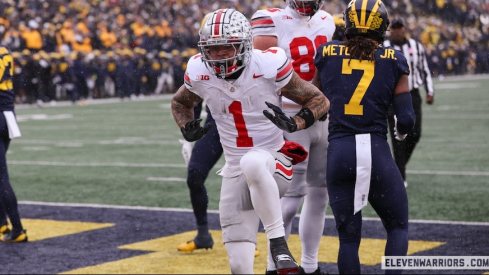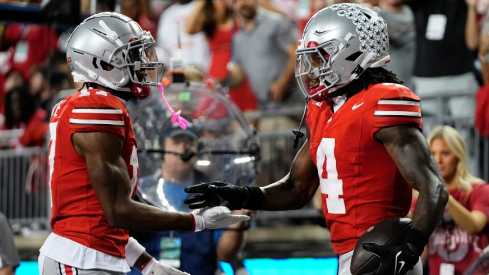 Forcing action away from the play
Forcing action away from the playWith so much focus this winter upon 'spread to run' concepts, I thought it only fair that we look at how a defense defends the spread.
I have previously discussed that a defense will cheat numbers--often the 'alley' player--to negate the spread's additional run threat, but how else does a defense defend the spread? Like any other scheme, the spread has advantages and disadvantages. Namely, the scheme puts enormous pressure on the quarterback. Not only must the QB be both an adequate passer and run threat, he must also repeatedly make the correct reads.
A defense therefore attacks a spread offense by confusing those QB reads, namely through the use of the 'scrape exchange.'

The concept is simple. The backside defensive end and linebacker trade gap responsibilities. The end will become responsible for the 'C' gap, while the Will linebacker will take the 'D' gap and contain. At the snap, the defensive end crashes straight down for the tailback. The defense's hope is that the QB, seeing this, pulls the ball to keep, only to be met by the scraping linebacker.
Given the spread's foundational basis, it makes sense why this is a defense's focus. The spread's goal is to negate a defense's unblocked backside defender. The scrape exchange is the defense's attempt to regain that numbers' advantage. The defense's hope is not only to confuse the quarterback but also that, even if QB does give the ball on the inside zone play, that crashing defensive end will make the tackle from behind.
This technique can also be used for other shotgun read plays. Take the inverted veer, for example. Below, Ohio State runs a scrape exchange play side to defend the inverted veer read.
As Chris Brown discusses, this is a riskier strategy because of the wider variety of ways to attack play side, but it nonetheless is again an attempt by the defense to confuse the QB's reads. Spread offenses have adapted ways to respond to this exchange. For example, Oregon has effectively used the 'midline zone read,' whereby the offense will now read the backside defensive tackle rather than the end. The offense can then block the crashing defensive end and let the linebacker simply run himself out of the play, creating the potential for big cutback lanes.
The upshot, however, is that since the scrape exchange's widespread use, offenses have been unable to simply rely upon the base zone read and its equalizing of arithmetic. This defensive technique has therefore been able to negate the spread's pure arithmetic gain, and force an offense to remain a step ahead of the defense by running plays to counter the scrape exchange.

